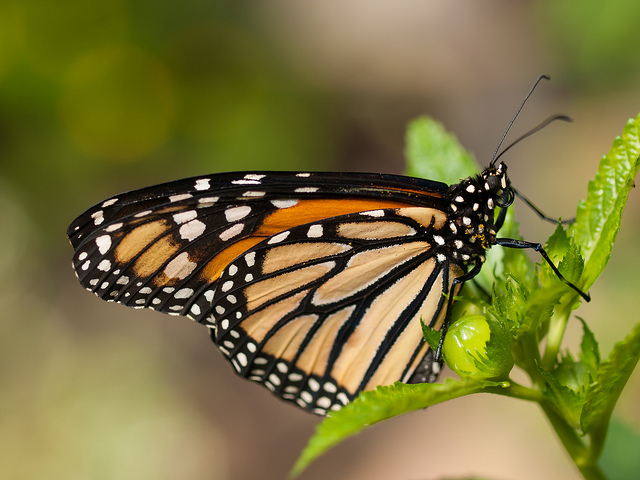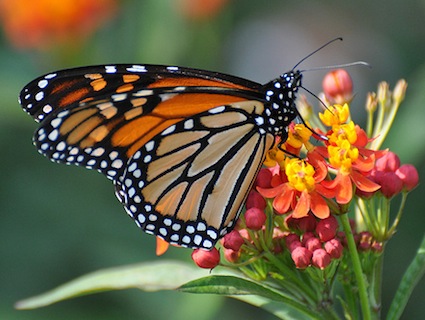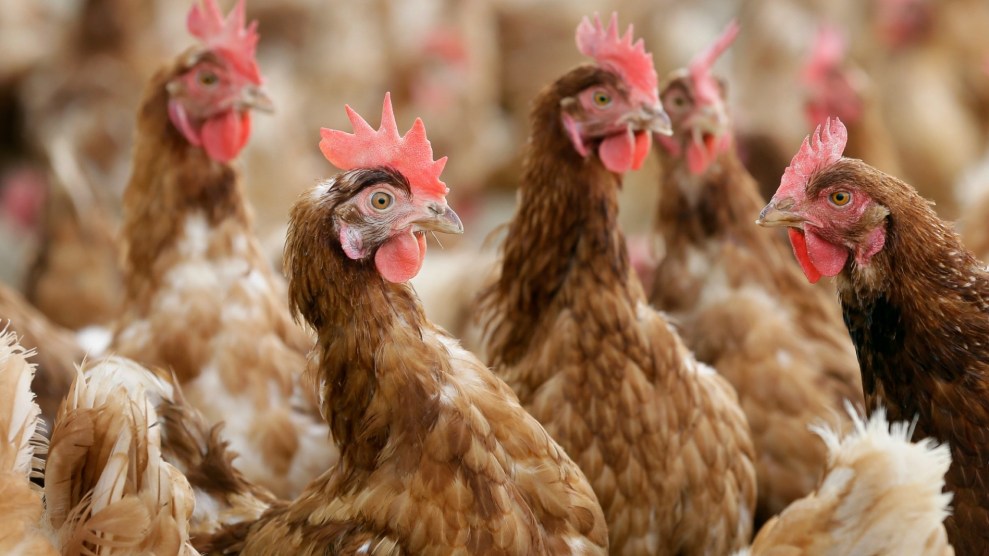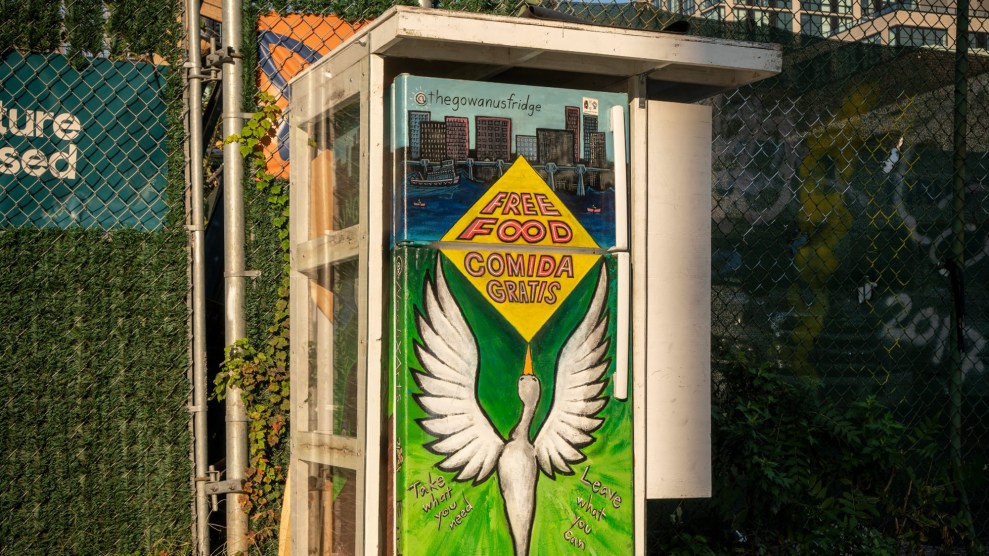
A monarch butterfly, with milkweed. <a href="http://www.flickr.com/photos/26782864@N00/8190406715/in/photolist-dtKYyT-dtRx81-dtKXbK-dtL1eH-8JAHjt-8JjNyU-8JjNGo-8JAHAa-fFGWW2-83yg1Q-dnnoPs-dnnoNm-dnnoLb-dnnkQz-bnTyj3-bnTxmY-bnTxN9-83uvyD-dfRaL7-8mmqtj-bqduow-fAha4T-5N7WTy-dkB5MQ-dnnkND-dnnoQw-5DWtyF-7R7dw-5HfWa2-jmDEKx-sTMw-7mxV9F-b1aRQx-7R6Z9-8uCSSh-niMrf-213DQi-213DyP-2182Pu-cTacE7-cTacoQ-dnnkTM-asXFVx-BxWRn-dkB6aW-dkB6UQ-dnnoDo-aqQW1B-8uCRNf-8n1gs-iU5Afo">William Warby</a>/Flickr
The monarch butterfly is a magnificent and unique beast—the globe’s only butterfly species that embarks on an annual round-trip migration spanning thousands of miles, from the northern US and Canada to central Mexico. And monarchs aren’t just a gorgeous bug; they’re also pollinators, meaning they help keep land-based ecosystems humming. Their populations have been plunging for years, and the number of them hibernating in Mexico last year hit an all-time low, reports University of Minnesota ecologist Karen Oberhauser. Why? Here’s Oberhauser:
Tragically, much of their breeding habitat in this region [the US and Canada] has been lost to changing agricultural practices, primarily the exploding adoption of genetically modified, herbicide-tolerant crops in the late 20th and early 21st centuries … These crops allow post-emergence treatment with herbicides, and have resulted in the extermination of milkweed from agricultural habitats.
In a 2012 post, I teased out how crops engineered for herbicide tolerance wipe out milkweed, the monarch’s main source of food, and lead to the charismatic specie’s decline. And here’s the peer-reviewed paper, co-authored by Oberhauser, that documents the trend.












